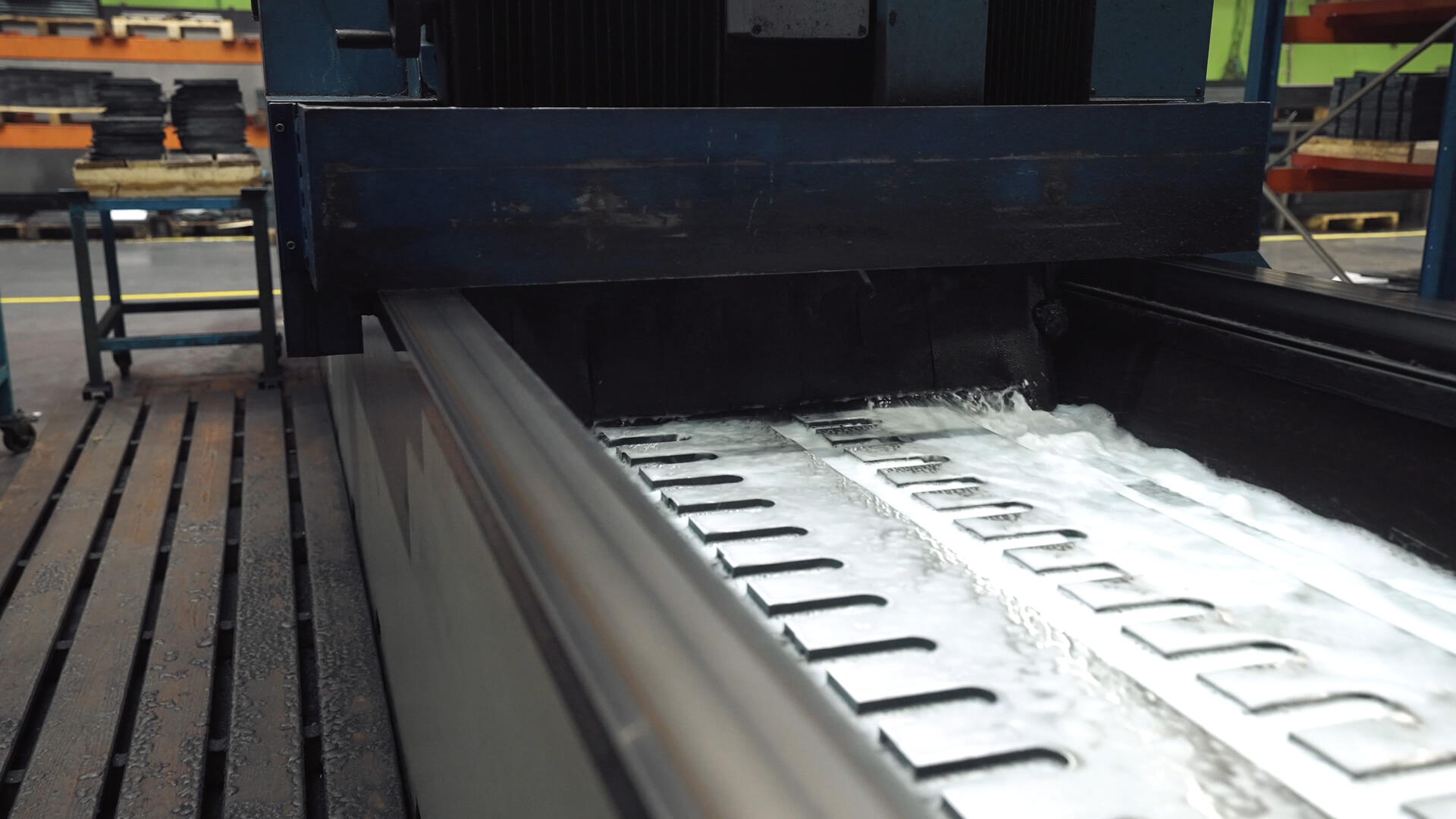How to properly sharpen industrial knives in four steps
Sharpening knives plays a vital role in the production and maintenance of industrial knives. What to watch out for to achieve dimensional accuracy and quality of the knife surface? We have listed the four most important principles with which you can sharpen any industrial knives correctly.

1. Choose the right horizontal or vertical grinder.
Choose the type, size, power, stiffness and accuracy of the grinder with which industrial knives achieve optimal work performance even after regrinding. How to understand grinders? According to the axis of the spindle, industrial knife grinders can be divided into horizontal and vertical.
Horizontal knife grinders: small cutting area, easier maintenance
Horizontal grinders of industrial knives grind the circumference of the blade. Their advantage is that they have a small area of engagement, so the grinding wheel does not clog so easily. The centrifugal force and coolant pressure also contribute to its purification.
With this grinder, make sure that the diameter and width of the blades are as large as possible, due to the high grinding power with a larger cutting area. Ideally, the blade is wider than the ground surface of the workpiece.
Vertical knife grinders: great performance in a short time
Vertical grinders of industrial knives grind discs or segments with the forehead. Because the large face of the blade is still engaged in this method of grinding, the blade becomes more clogged with chips.
Compared to the horizontal grinder, this method of grinding industrial knives is very powerful (with a large removal of material in a short time), but with generally worse quality of the ground surface. However, with proper grinding with a vertical grinder, it is possible to achieve very good quality and accuracy of grinding, so it is used in practice more often than horizontal grinding.
Sharpening knife surfaces vs. sharpening blades
For grinding the surfaces of industrial knives, powerful vertical grinders with an output of tens and hundreds of kW fitted with 10–20 grinding segments are used. On the contrary, when sharpening the blades of industrial knives, vertical grinders with a tilting table have their place, where there is no need for such grinding performance as for grinding surfaces. However, an important factor here is a rigid and accurate machine, quality abrasives and experienced staff.
2. Choose a suitable abrasive.
The correct selection of abrasive plays a crucial role in the grinding process. In this step, sharpening knives depends on many factors: the type of abrasive, its granularity, binder, as well as the size of the blade or the number of segments.
3 main abrasive components: abrasive grain, binder and pores
As for abrasive grains, there are many types of them – from corundum to diamond. We recommend using mainly the so-called Sintercorundum, when sharpening industrial knives. For grain size, which is indicated by the numbers 6-1200, in general, the larger the number, the finer the grain. In this respect, choose abrasives with a grit size of 24-36.
The binder connects these grains into one compact unit and determines the strength and hardness of the grinding wheel or segment. You can find a number of them on the market: resin, ceramic, metal, rubber, etc. In 95% of cases, we use ceramic binders because it has a very good abrasive performance, while the surface quality is at a high level. The hardness of the abrasive is denoted by the letters A-Z, where A is the softest and Z is the hardest.
On the contrary, pores determine the so-called openness of the abrasive. Very hard materials should be sanded with a softer abrasive with a more open abrasive structure. The open structure also cools the workpiece because coolant is retained in it.
3. Select the appropriate cooling method.
For cooling, make sure that you select the appropriate coolant, along with ensuring that there is a sufficient amount and the correct flow to the point of contact between the abrasive and the workpiece.
Again, there is a wide range of coolants, from mineral oils to semi-synthetic to fully synthetic. We recommend using fully synthetic cooling emulsions, which have very good cooling and washing properties, are harmless and dispose of well. Sufficient flow and direction of fluid between the workpiece and the tool (abrasive) is also important. Since the liquid leaves with most of the heat during grinding, we cool it in cooling tanks with an external cooling device.
4. Do not forget about the correct setting of grinding conditions.
Optimal adjustment of grinding conditions (cutting – peripheral speed, and feed) is another important parameter in grinding.
The abrasive conditions are set individually for each industrial knife grinder. In general, for rough grinding we use higher spindle feeds and higher table speeds, soft (H-K) to medium hard (L-O) abrasives. For the final grinding of the surface, reduce the feed to a minimum, while the speed of the grinder or headstock table is halved (for grinders that allow it). In this case, we use very soft (E-G) or soft (H-K) abrasives.
In our article, you learned the basic principles for achieving dimensional accuracy and surface quality when grinding industrial knives. You have discovered the differences between grinders and learned tips on how to choose the right abrasive, cooling method or optimal abrasive conditions. If you have any further questions, please contact our sales representative.